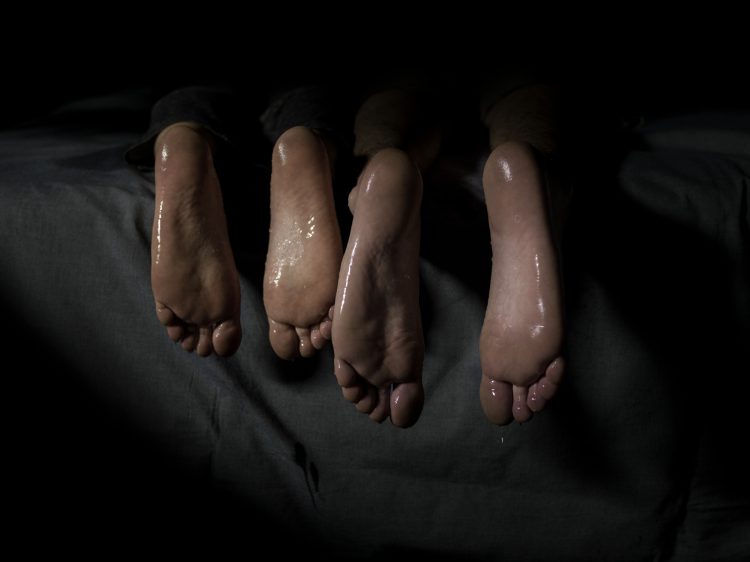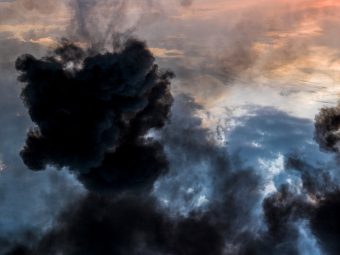Newsha Tavakolian
Space to Breathe


Newsha Tavakolian creates cover art for fictional albums for six Iranian women musicians. Ironically, the CD cases these covers adorn are empty. This absence mirrors the reality these women inhabit. They are legally not allowed to record or perform music publicly. In the portraits made by Tavakolian, the women, who are professional singers, appear in an artistic reverie, performing for an imaginary audience. Although they are still against the glittery backdrop of their portraits, each of them carries a form of volatile energy—their voices find their way to the viewer despite the silence.
Banned from working on the streets as a photojournalist, in 2012, Newsha Tavakolian shifted her practice and turned her bedroom into a studio. For Look, Tavakolian makes portraits in her bedroom, of individuals from her apartment building, whom she has known for over ten years. Over a period of six months, she would fix her camera on a tripod at 8 pm, and make their portraits, facing the same view of the city she had watched for ten years. The window behind her subjects, overlooking cold concrete buildings, served as an apt metaphor for the lives of others.
By capturing a moment of each of their stories within the frame of a window, Tavakolian hoped to bring to life the story of a nation of middle-class youth, who face the daily battle of living in an isolated, conformed society and with little hope for the future.
Newsha Tavakolian portrays an abstract state of mind by looking inward. She chronicles the tediously repetitive transformation of her own body—a result of the on-set of Premenstrual Syndrome—and its effect on her faculties of perception. Through For the Sake of Calmness, Tavakolian depicts the unease of being immersed in the reality of one’s own life, while remaining painfully aware of what lies outside. The project visualizes a shapeless idea, one that has become abstract to the point of obscurity. Tavakolian utilizes landscape, real and imagined, as the backdrop for her visual narrative. Sound, intertwined with her narrated monologue, adds a third dimension to this portrayal. A series of super slow-motion sequences in the film convey a sense of stasis; yet, the perspiring bodies featured in the sequences are defined by restlessness.
Tavakolian is particular not to romanticize the female body or the feminine concept of PMS. To avoid this pitfall, she expands her subject to incorporate a metaphorical portrayal of her home country, Iran, as well. Within this terrain, Tavakolian muses that the foggy headspace she encounters through PMS is akin to the predicament of her homeland—as with a woman caught in the dazed state of PMS, Iran too is aware of her own pain and of the ways in which it is at odds with the world that surrounds her and its expectations of her.
Blank Pages of an Iran Photo album centres around the Iranian family photo album, reminiscent of the one Newsha Tavakolian had in her childhood house. The cover of that photo album was an image of the snow-capped Alps— it became the imagined location of all her childhood daydreams. Tavakolian would stare endlessly at this photograph, willing it to lead her to an escape from the anxiety of her immediate surroundings, in search of a sense of calm.
For this video, Tavakolian portrays one of her characters on a mountain overlooking Tehran. The slopes of this mountain are covered in plastic waste. Within this landscape, Tavakolian asks her protagonist to carve his own space.
The photographers featured in Space to Breathe in De Grote Kerk are Abbas Attar, Aishwarya Arumbakkam, Gabriella N. Báez, Ghazaleh Rezaei, Hedieh Ahmadi, Khalik Allah, Merri Mkrtchian, Nooshin Shafiee, Parastoo Ebneali, Pouya Parsamagham, Ranita Roy, Saba Alizadeh, Siavash Eydani, Tim Hetherington, Uma Bista and Yael Martínez.
Location: Grote Kerk

